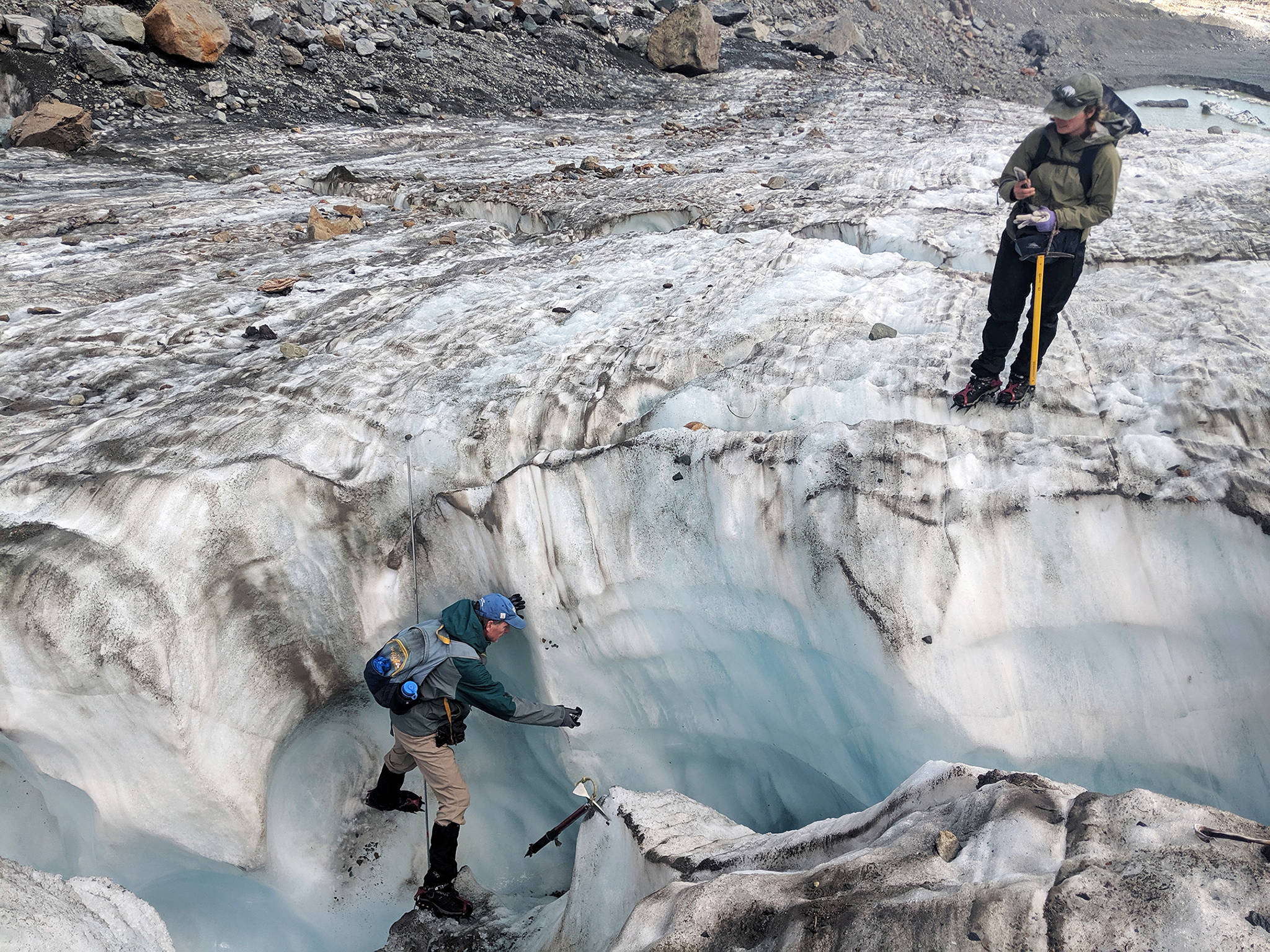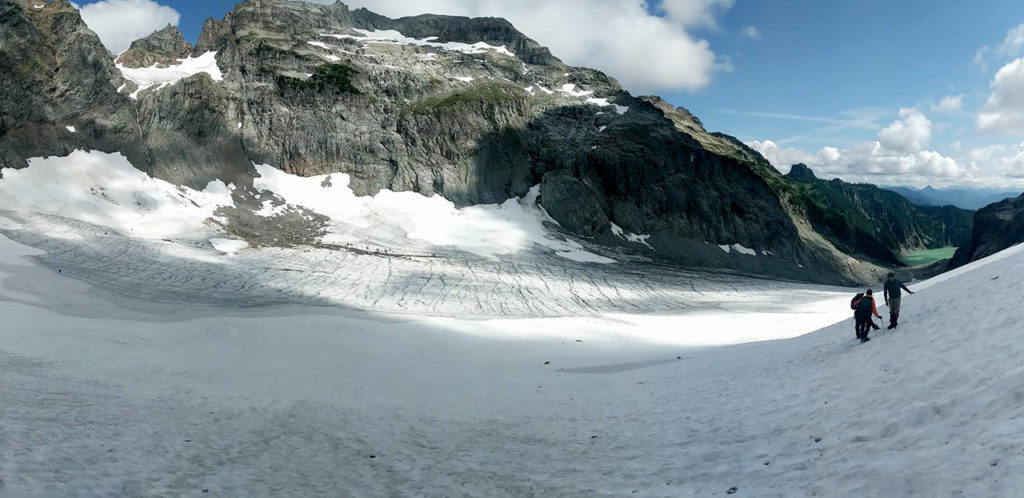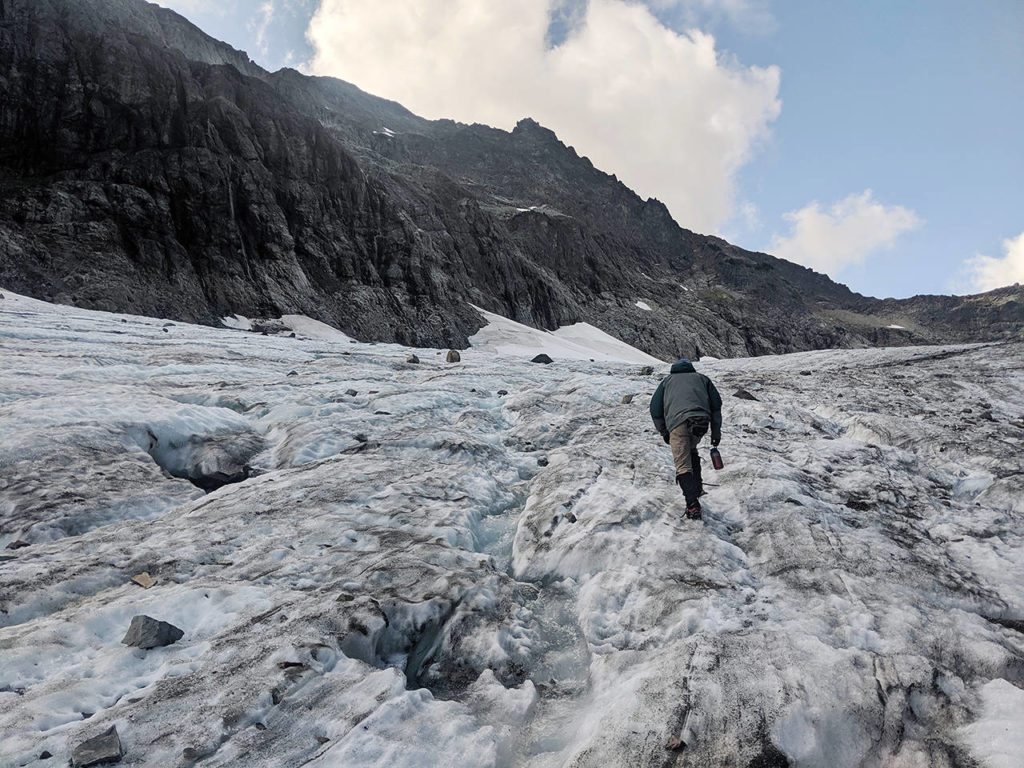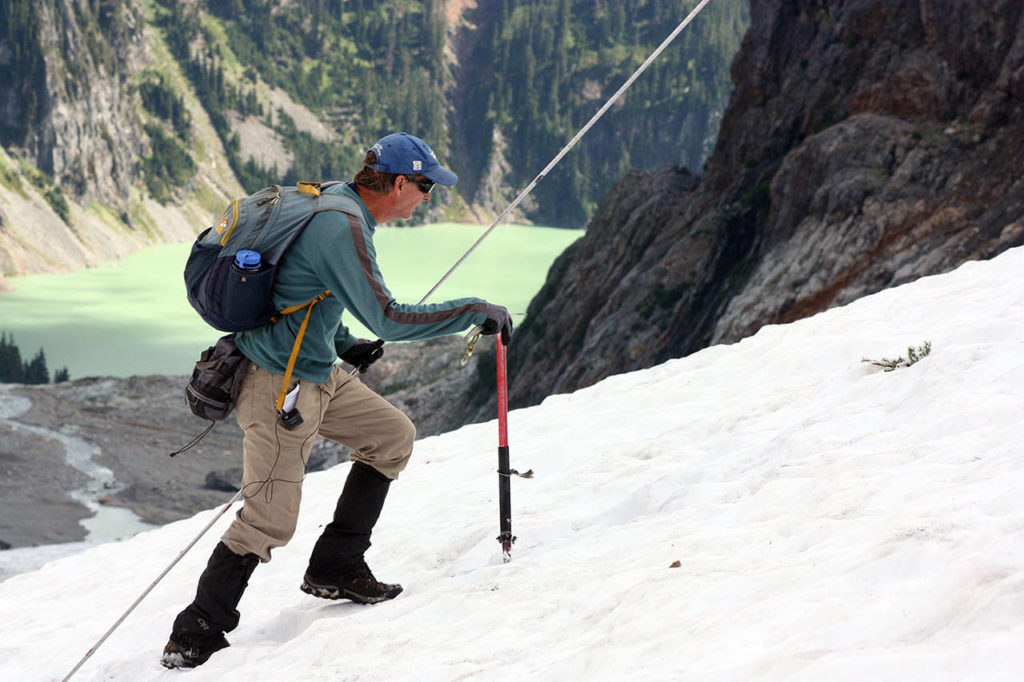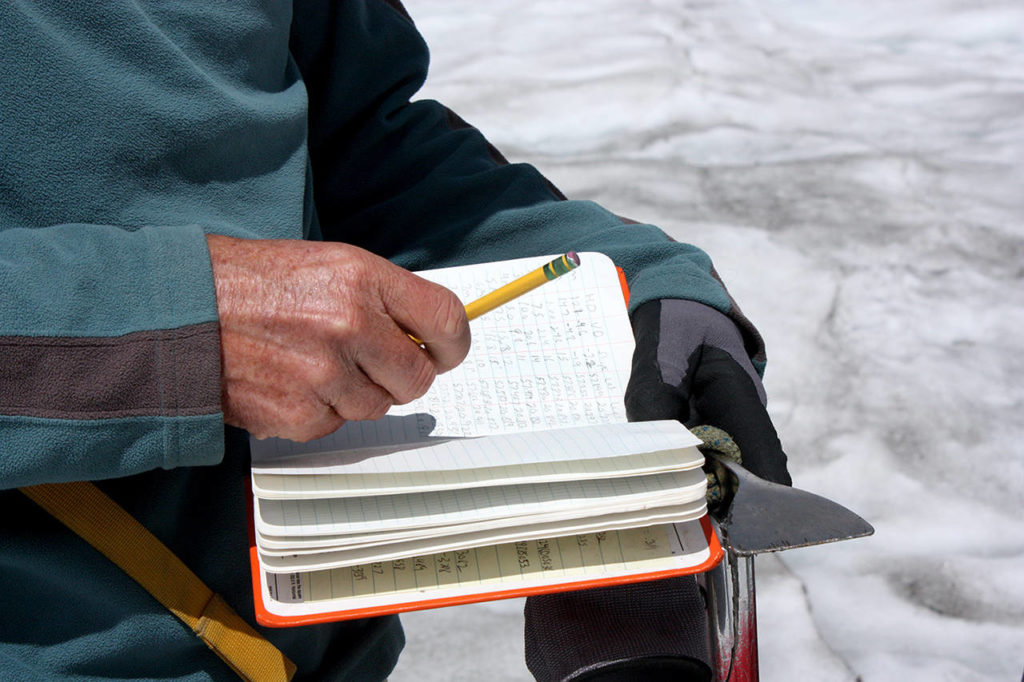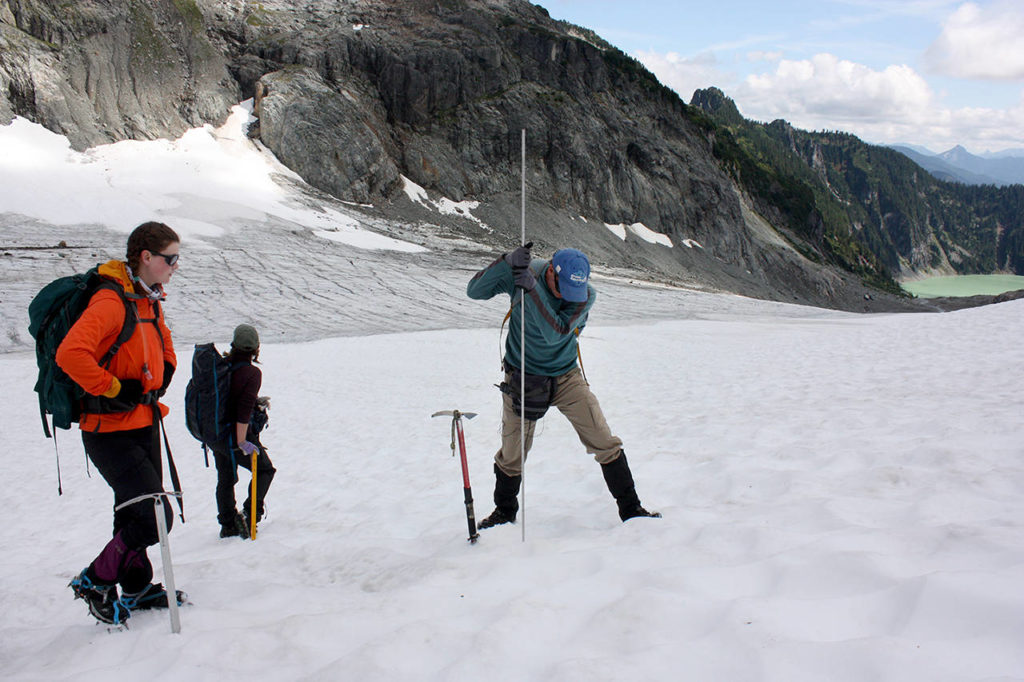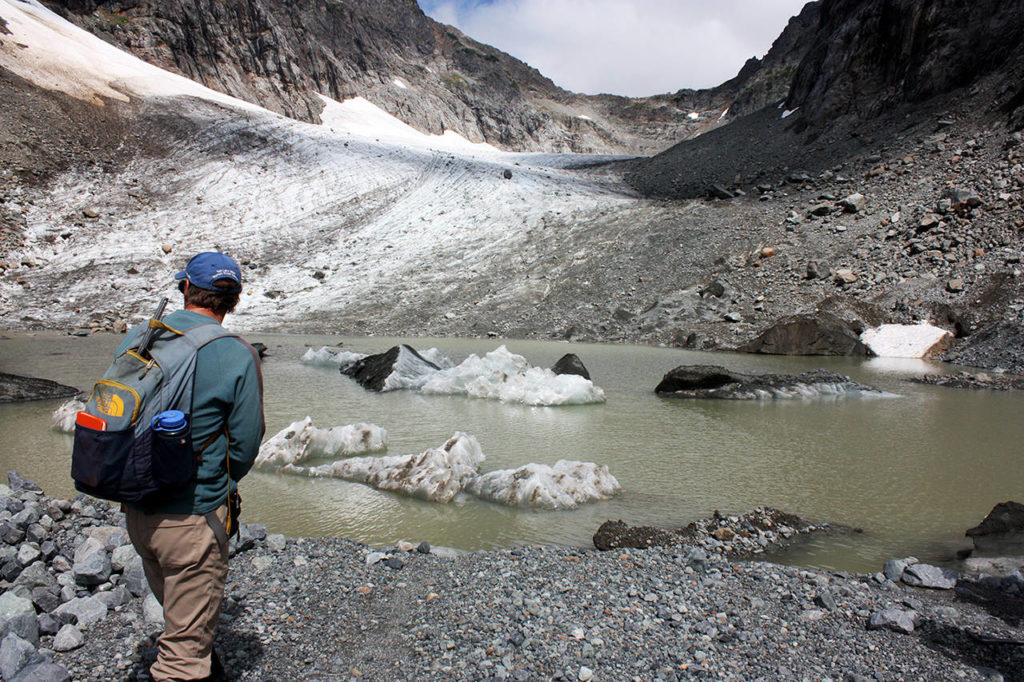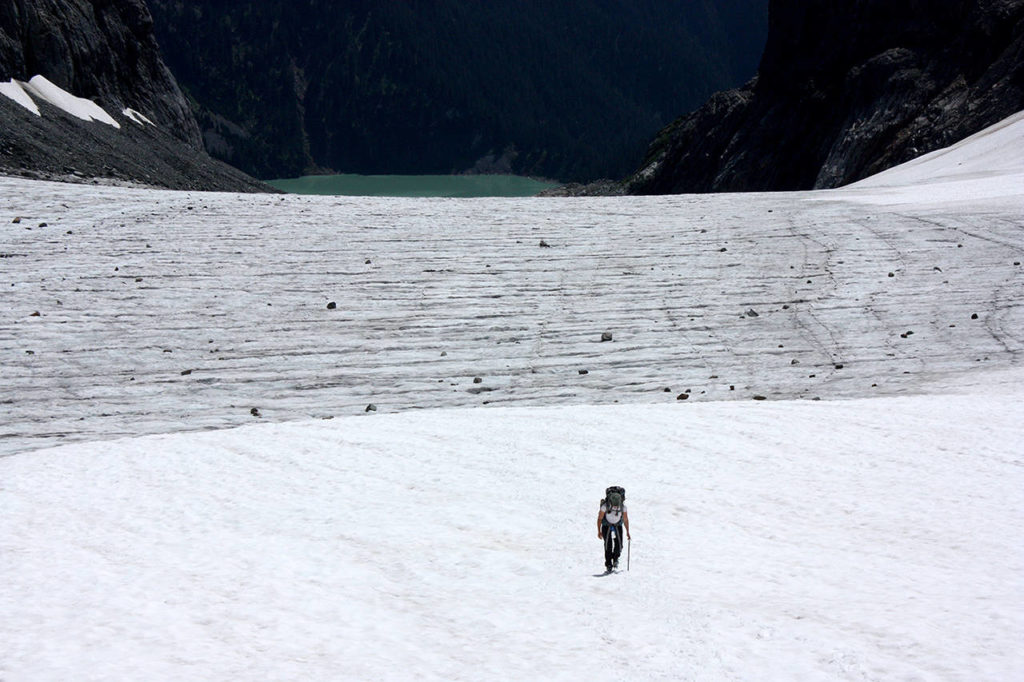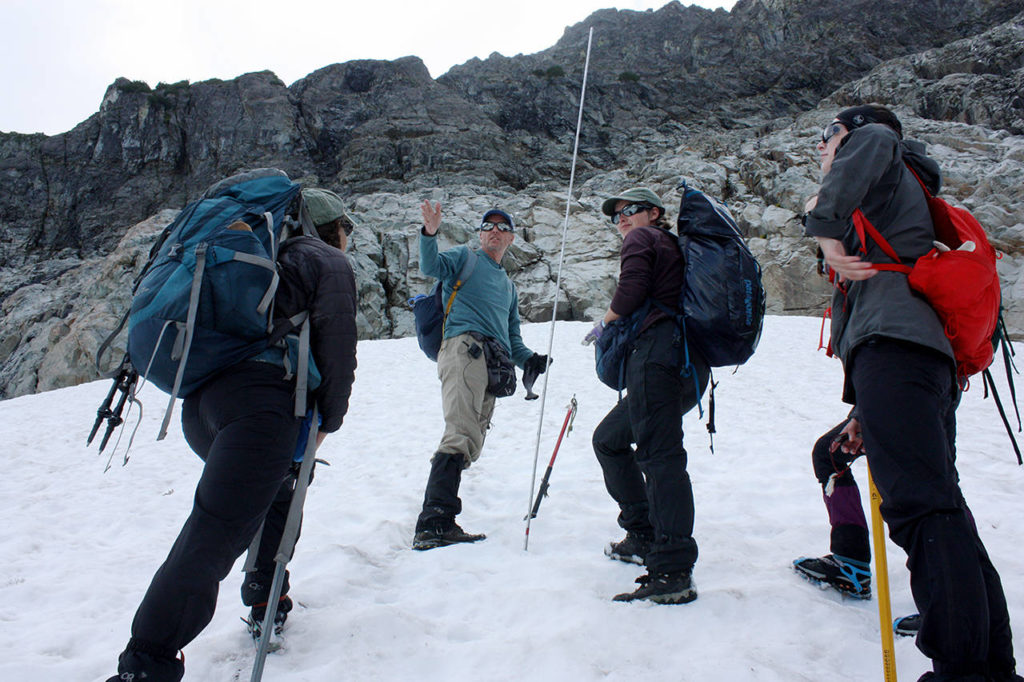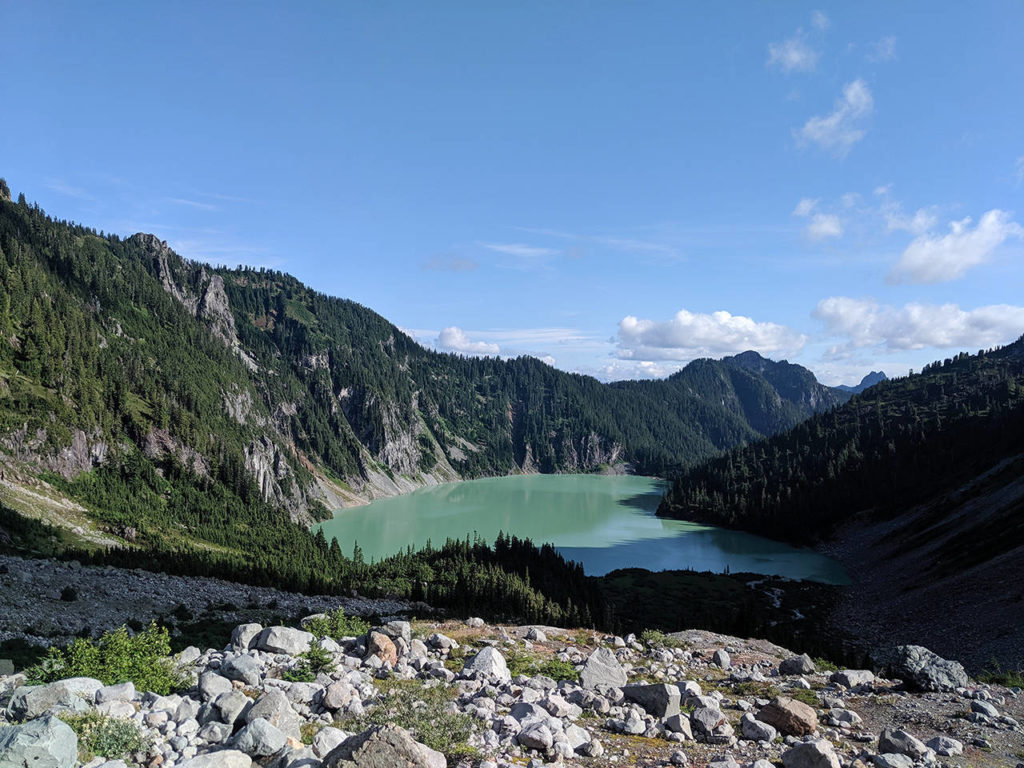SKYKOMISH — Nestled in a cirque of mountain peaks in the Monte Cristo range, above the jade green waters of Blanca Lake, lives the Columbia Glacier, several millennia old and now in its waning years.
It has the distinction of being the lowest-elevation glacier of its size in the North Cascades, ascending from 4,700 to 5,600 feet high — fed by low clouds sweeping over the mountains, as well as favorable avalanche conditions. On a dry summer day, Columbia Glacier and other glaciers in the region act as a backup generator for the Skykomish River Basin. They can fuel up to 25% of the basin’s stream flow.
For the masses of hikers who travel 65 miles east of Everett and trudge up seemingly endless switchbacks to the southern edge of Blanca Lake, Columbia Glacier often plays a bit part, photobombing Instagram pictures from far in the background.
Within decades, though, scientists predict Columbia Glacier will be gone.
“This glacier won’t survive this climate, period,” said glaciologist Mauri Pelto, a professor of environmental science at Nichols College in Massachusetts.
Since 1984, Pelto has made the journey to Washington to take detailed measurements of 10 glaciers for the North Cascades Glacier Climate Project. He signed up for the annual tradition, which is supposed to last half a century, when he was a 22-year-old Idaho college student. Since then, he’s already witnessed two glaciers disappear.
Pelto watches climate change happen in real time. Columbia Glacier has lost about a third of its mass — more than 80 feet in thickness — just in the time he’s studied it. Even if Earth stopped warming, the glacier can’t survive, he said.
Yet the warming is accelerating, Pelto said. In the first 25 years, he saw the glacier thin by about 40 feet. It’s shrunk the same amount in the past decade alone, he said. The trend isn’t isolated to Washington. Pelto has studied over 250 glaciers, including many in British Columbia and Alaska.
“None of them are doing well,” he said.
Last weekend, Pelto traveled to Columbia Glacier for the 36th time. The story was much the same.
He, his daughter, Jill Pelto, who has a master’s of science degree, and three graduate students donned their backpacks on a soggy Saturday and hiked up to the Blanca Lake vista. They then departed from the smartphone-wielding masses to bushwhack their way to the other side of the lake, following narrow, easy-to-lose footpaths. They tiptoed on rocks along the water’s edge, straddled fallen logs, hopped their way through boulder fields and forded two creeks. The second creek, at the base of the glacier, was so numbing that they took a break to rub their reddened feet back to life.
When they reached Columbia Glacier that Monday, over 80% was bare of snow. Shadows cast by the sun highlighted crevasses and cracks in the ice.
It’s not supposed to look like this, Pelto said. Ideally, at this time of year, snow would cover at least three-quarters of the glacial field, acting as a protective blanket that prevents the ice from melting. When Pelto first visited the area, there was enough snow that he could ski down the glacier without fear of tripping into nooks and crannies. He wouldn’t dare try that now, he said.
Even a February that brought historic snowfall in the lowlands couldn’t make up for an otherwise dry winter, Pelto said.
Strapped into crampons, the team made its way up the glacier, stopping every 100 meters to measure its elevation using a laser rangefinder, cataloging how it has shifted year to year, and decade to decade.
Then they tromped up the sides of the basin, where avalanches have piled snow. Pelto and his team took turns jamming a long metal pole into the snow to measure the depth.
“If we don’t have anything over 8 feet deep, it’s not going to last,” Pelto said.
Only a few spots in the deepest parts of the avalanche deposits measured more than 8 feet. By the end of summer, Pelto said, only 5% of the snow will remain.
After hours of testing depth, the team made its way back to the bottom of the glacier. Pelto took off his crampons and slid down on his boots, using his ice ax as a ski pole. They stopped by water currents carving their way through the ice. To test the stream flow, they poured in a florescent yellow dye and timed how fast it traveled downhill.
Looking at the numbers from the laser rangefinder, Pelto estimates that more than 6 feet of ice may disappear by summer’s end, making for the second- or third-worst year for melt, along with 2005 and 2015. He said other glaciers in the North Cascades are withering at a similar rate.
Years like this may become more common, Pelto said. And just as worrying, there haven’t been “good years” to make up for the bad ones, he said. Six years in a row now, Columbia Glacier has failed to accumulate enough snow to make it through the summer without receding.
The landscape provides a map of the glacier’s former stature. Like two outstretched arms, lifeless boulder fields reach to the edges of Blanca Lake, showing how the glacier forked to either side of a knob in the hillside. Just beyond the bare patch, trees hundreds of years old crowd the eastern flank of the lake.
When Pelto arrived in the 1980s, Columbia Glacier was thicker and more convex. It sidled up to either side of the basin.
“The valley looked relatively full of glacier,” he said. “Now it’s looking relatively empty.”
The geography will continue to change as the glacier melts, Pelto said. When it’s gone, only hints of its previous existence will be left.
In place of ice, there will be two new alpine lakes. One has formed in the past few years at the base of the glacier, where icebergs float silently in gray water.
Then, with no more glacial sediment pouring in, Blanca Lake’s bright green waters will transition into shades of blue.
Without the cooling effects of the glacier, the water will only get warmer, stressing aquatic life, Pelto said. Those effects will continue downstream, particularly on dry summer days, when glaciers are no longer around to help keep creeks flowing.
Pelto said it’s strange, sometimes, to be the chronicler of dying glaciers.
Soon, there will be no glacier to study.
“It’s a loss,” he said. “It’s just a loss to the environment. It’s an aspect of our world, our environment, that wouldn’t exist anymore.”
Zachariah Bryan: 425-339-3431; zbryan@heraldnet.com. Twitter: @zachariahtb.
Talk to us
> Give us your news tips.
> Send us a letter to the editor.
> More Herald contact information.
